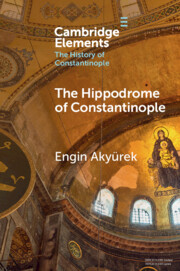Element contents
The Hippodrome of Constantinople
Published online by Cambridge University Press: 06 September 2021
Summary
- Type
- Element
- Information
- Online ISBN: 9781108942959Publisher: Cambridge University PressPrint publication: 07 October 2021
Bibliography
Primary Sources
Secondary Sources
- 2
- Cited by

